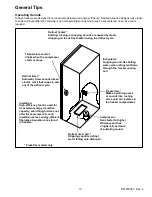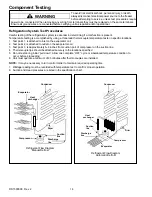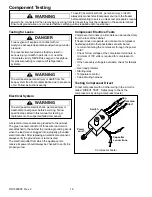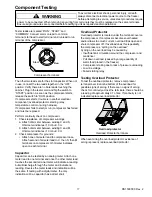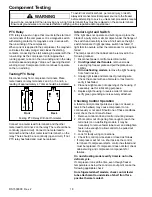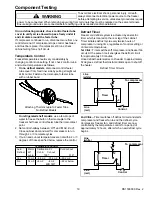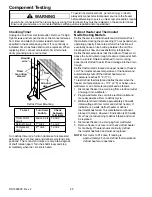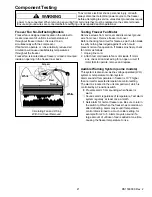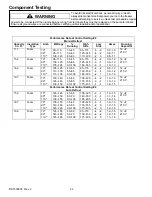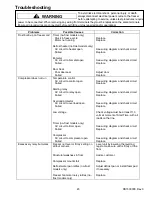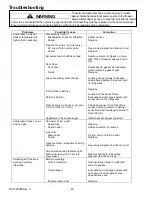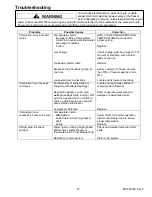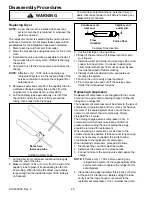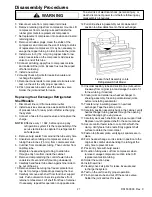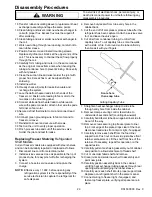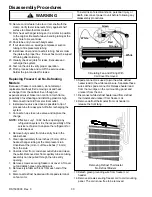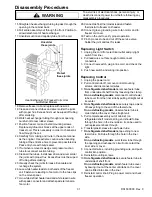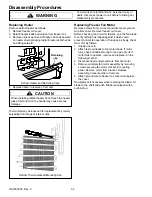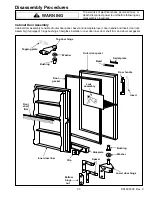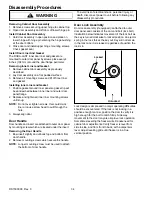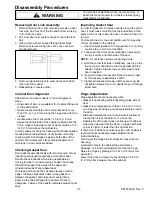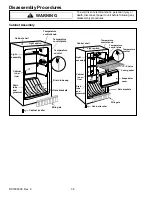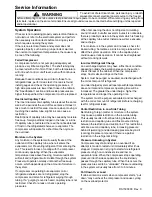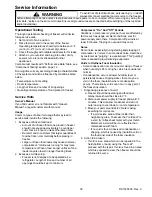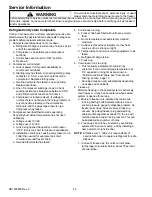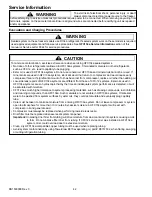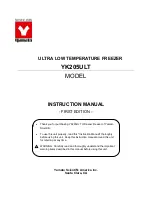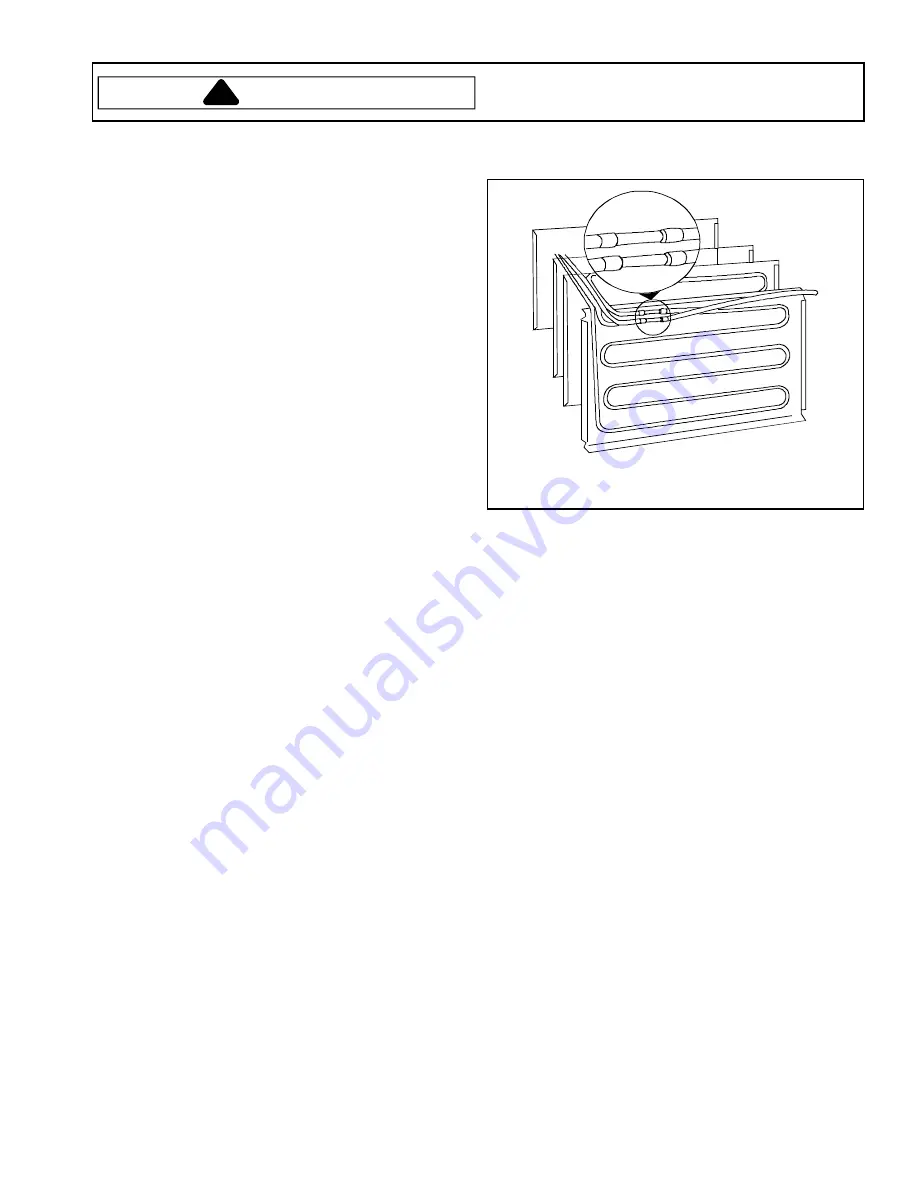
27
RS1500000 Rev. 0
Disassembly Procedures
To avoid risk of electrical shock, personal injury, or
death, disconnect power to unit before following any
disassembly procedures.
WARNING
!
5. Disconnect wire from compressor terminals
6. Remove retaining clips from compressor mounts. Lift
compressor from mounting rails and transfer the
rubber grommets to replacement compressor.
7. Set replacement compressor into position and install
retaining clips.
8. Remove all rubber plugs, clean the stubs of the
compressor and compare the size of tubing to stubs
of replacement compressor. It may be necessary to
swage the copper tubing in order to make the joints.
9. Install a six inch (152 mm) long copper tube to low
side process tube on the compressor. Add service
valve to end of this tube.
10.Connect all tubing, apply flux to compressor stubs
and solder all the joints. Excess flux must be wiped
off after soldering.
11. Install a new drier.
12.Visually check all joints for leaks. Evacuate and
recharge the system.
13.Reconnect wire leads to compressor terminals and
test run the unit to verify proper operation.
14.Pinch process tube and cut off the service valve.
Solder the joint and test for leaks.
Replacing Heat Exchanger Refrigerated
Shelf Models
1. Disconnect line cord from electrical outlet.
2. Install a service valve as close as possible to the tip
of process tube, for easy pinch-off after recharging
the system.
3. Connect a hose to the service valve and capture the
charge.
NOTE:
Effective July 1, 1992, before opening any
refrigeration system it is the responsibility of the
service technician to capture the refrigerant for
safe disposal.
4. Remove butyl sealer from around the tube entry hole.
5. Unsolder suction tubing at compressor stub or cut
tubing three inches (76 mm) from compressor stub.
6. Cut drier from condenser tubing. Then cut drier from
capillary tube.
7. Straighten heat exchanger tubing to slide tube
through entry hole from inside the cabinet.
8. Remove clamp retaining the control feeler tube to
underside of second shelf (counting downward).
9. Carefully bend feeler tube down against liner side to
be out of the way.
10.Remove screws securing top freezer plate to liner
top. As front edge of plate drops clearing the liner.
11. Carefully remove each shelf from food liner support
rails. Push outward on liner side just above front
retainer embossment. Lift shelf front free of retainer.
If necessary, repeat this operation on opposite side.
12.Pull entire shelving assembly out of cabinet and
position to allow detachment of heat exchanger.
Freezer Shelf Assembly Joints
Refrigerated Shelf Model
13.Unsolder capillary tube and suction line (cut suction
line away from original joint and swage the end of it
for new tubing, if desired).
14.Clean joints and solder new heat exchanger to
shelving assembly. Clean & paint soldered joints
before reinstalling evaporator.
15.Transfer vinyl insulating sleeve to new heat
exchanger. Tape the same points.
16.Carefully position assembly back in the cabinet, verify
heat exchanger tubing passes through the opening
without damaging the vinyl sleeve.
17.Carefully work each shelf into its proper support rails.
Replace non-refrigerated shelf in the same manner.
18.Secure control feeler tube to correct shelf with the
clamp. Verify feeler tube rests firmly against shelf
surface to obtain thermal contact.
19.Fasten top freezer plate, verifying all spacers are in
place.
20.Form heat exchange so it is similar in position to the
original. Be careful when bending the tubing at the
entry hole to prevent kinks.
21.Pack entry hole with butyl sealer.
22.If suction tubing was cut from compressor when
removed, swage compressor suction tube to fit
replacement suction tubing.
23.Solder the suction lines.
24.Install new drier.
25.Visually check all joints for leaks. Evacuate and
recharge the system.
26.Test run the unit to verify proper operation.
27.Pinch process tube and cut off the service valve.
Solder the joint and test for leaks.

